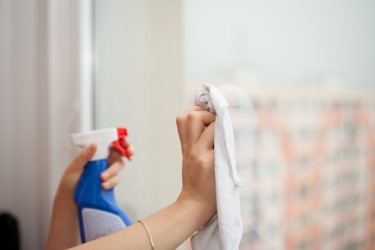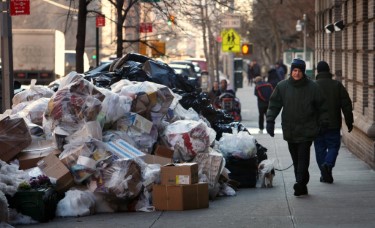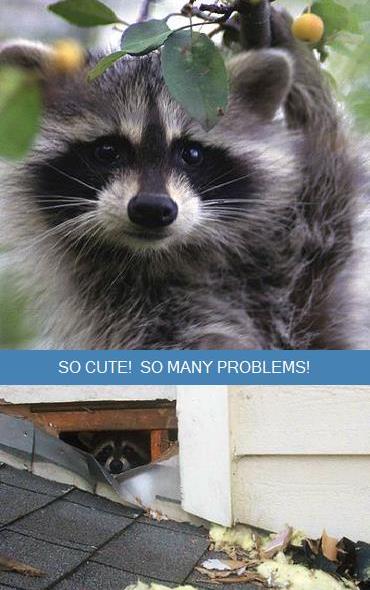
Pests are animals or insects that can harm human beings and living conditions. The impact of a pest issue can range from a mere annoyance to exposure to a deadly disease. At Long Island Pest Control, we protect our customers from potentially harmful pests and seek to resolve pest control issues quickly. We provide our Long Island customers with the best residential and commercial exterminating and wildlife control services. Our Long Island animal control and humane wildlife removal services are executed using the most advanced wildlife control methods. Wildlife trapping is a highly regulated activity in New York, and anyone who traps must follow strict rules established and enforced by both federal and state agencies. Allowable trap types and acceptable trapping methods are examples of the guidelines and regulations that the New York State Department of Environmental Conservation implements and enforces. Animal trapping is an element of wildlife control. Our Long Island wildlife control and exterminating services protect your home, business, workplace, family, and pets from unwanted intruders. Contact our licensed New York exterminators today at 516-608-8437. We offer same-day and next-day pest control services to Nassau County, New York residents, including Long Island bee removal, wasp nest removal, hornet nest removal, mouse extermination, termite inspections, rat removal, and ant control. Long Island Pest Control also provides 24/7 emergency humane wildlife removal services.



We strive and pride ourselves on providing exceptional customer service and unbeatable Nassau County wildlife removal and Long Island exterminating services. We will assess your problem and develop a pest or wildlife control solution that focuses on prevention, removal, and exclusion using an integrated pest management approach. We are a full-service wildlife removal and pest control company. We are fully licensed and insured in the State of New York and stringently follow all laws and regulations related to pest control and nuisance wildlife management. Long Island Pest Control employs licensed professionals, epitomizing the attributes of integrity and commitment. Our pest control and humane wildlife removal service treats people, property, and wildlife with respect. At Long Pest Control, we strive to broaden our knowledge, expertise, and abilities to advance the practice of pest and nuisance wildlife control. Upon request, we offer our expertise to all Long Island residents within the limits of our experience, ability, and legal authority. We are Long Island's wildlife animal control and pest control, provider! Our Long Island exterminating services and wildlife control prices can't be beaten.
New York State Environmental Conservation Law mandates the humane treatment of wildlife. Long Island Pest Control wildlife trappers strictly comply with this demand. Our nuisance wildlife control operators resolve wildlife issues using a decision-making plan that balances safety, feasibility, landowner rights; the protection of wild animal populations and habitats; the humane treatment of animals, and legal, ethical, aesthetic, and financial matters.
Our trappers carry out the Long Island wildlife control program in such a way as to avoid negatively impacting any non-target wild animals. Since our Long Island wildlife removal professionals know about the habits and habitat of the target nuisance wildlife, they will exercise caution in avoiding animal trapping methods that will affect non-targets, such as pets and other wildlife.
While it may be nice to look out the window of your Long Island residence and observe wildlife in your yard, they can cause some significant problems. Wild animals can damage your garden, lawn, and home. However, there are several steps that Long Island homeowners can take to prevent conflicts with wildlife. Long Island residences are the ideal refuge for nuisance wildlife such as raccoons, squirrels, groundhogs, opossums, bats, birds, foxes, skunks, rats, and mice because they provide readily available food, water, and shelter sources. Once inside a Long Island residence, wildlife is not only challenging to get rid of, but they carry wildlife diseases that can present a health hazard. Wildlife may be infected with zoonotic diseases and harbor disease-carrying parasites such as fleas, ticks, and mites.

Long Island Pest Control is a nuisance wildlife animal control service specializing in humane wildlife removal from Long Island homes and businesses. We believe that we are the best nuisance wildlife control service in Long Island, New York, because we offer our customers a complete solution to their nuisance wildlife control issue. Our nuisance wildlife control service employs wildlife trapping and rodent control pros. Our animal trappers will conduct an initial wildlife inspection of your Long Island residence or business to determine what type of wildlife is living in your dwelling. Are there animals in the attic of your Long Island home? Are you hearing animal noises during the day or at night? If the noises are at night, this may be mice in the attic, and if the animal noises are exceptionally loud, this is most probably coming from raccoons in the attic. Other wildlife that is active in Long Island attics at night would include rats, bats, opossums, and flying squirrels. Sounds heard during the day, maybe coming from gray squirrels in the attic or birds in the attic.
Long Island wildlife control experts will humanely trap the animals residing in the attic of your Long Island residence or business. Our licensed and insured Nassau County contractors offer animal damage repairs, attic cleanup, and sanitization services. As part of our Long Island Integrated Wildlife Pest Management Plan, we will make recommendations to prevent subsequent wildlife control issues and confrontations with unwelcomed nuisance wildlife, such as squirrels, skunks, birds, raccoons, foxes, groundhogs, bats, rats, mice, and opossums. Here our wildlife control professionals will be looking for what changes can be made to preclude future wildlife animal control issues. For example, the bats in the attic may be gaining access to your home via openings in your roofline. Upon completing the bat removal process from your Long Island residence, we will put you in touch with a licensed Nassau County contractor specializing in wildlife exclusion. An additional example of Integrated Wildlife Management would be squirrels, raccoons, or birds nesting in the chimney of your Long Island home. We will install a chimney cap to prevent future encounters with unwanted wild animals upon consummation of the Long Island raccoon removal, squirrel removal, or bird removal.

Raccoons and rats will shred garbage bags, so they must be stored in sealed garbage cans with securely fitting animal-proof lids. Preferably, trash cans should be stored in an outdoor storage shed, which will prevent raccoons and other wild animals from attempting to remove the covers. Dispose of garbage regularly.
Countertops, tables, floors, and sink drains regularly.
Your residence or business office frequently to eliminate pests and their eggs.
When possible, inspect dried food packages for pests before purchasing them.
Never store food items, including pet food, in a garage that is attached to your residence. Never store food items beneath your kitchen sink. Storing food in the garage or below the kitchen sink may result in a rodent infestation. Store food in airtight containers.
Should be regularly inspected and replaced if necessary. It functions to provide a barrier to dust, dirt, drafts, and pests.
Check for gaps and cracks through which pests can enter your home.
To decrease the number of flying insects around the doors and windows of your residence, replace mercury vapor lights with high-pressure sodium vapor or halogen lights.
Avoid bringing cardboard boxes into your Long Island home. Cardboard boxes often harbor cockroaches.
Raccoons, squirrels, opossums, birds, bats, rats, and mice can find their way into your Long Island residence through unscreened vents. Gable vents, attic fan shutter vents, bathroom exhaust vents, kitchen stove exhaust vents, and dryer vents can permit unwanted wildlife to enter your Long Island home.
Holes in the interior or exterior walls of your home. Fix damage to the roof or soffits and cracks in the foundation of your residence.
Holes on the exterior of your home through which cables or pipes enter.
Raccoons, squirrels, and opossums often access rooftops via shrubs and tree branches that contact the roof. Keeping trees and shrubs pruned is crucial in excluding wild animals from an attic. Mowing the lawn routinely eliminates places for mice to hide, and it is an essential component of rodent control in Nassau County.
The mulch created using cedar trees, and red hemlock repels moths, ticks, snails, pill bugs, and slugs, but not carpenter ants and termites. Mulches of all kinds create the perfect environment for termites because they keep the soil moist. Therefore, mulch should be kept at least three feet away from the foundation of your home. Eastern Yellowjackets are highly aggressive ground-nesting social wasps that build their nests in mulch.
Get rid of leaf and brush piles and stack firewood at least twenty feet away from your residence on a rack that is five inches above the ground. These materials make the ideal harborage site for rodents and insects.
Can attract many different types of pests, including mosquitoes.
Will prevent raccoons, squirrels, birds, and bats from coming down the chimney and possibly entering your Long Island residence.
Are attached to residences via fascia board. If leaves and debris are permitted to build up in the gutters, water will not drain out of them. Clogged gutters will result in the rotting of the fascia board, resulting in a weak point on the roof. Squirrels will gnaw a hole in the weakened fascia board and enter the attic of a Long Island residence at this point. Therefore, gutters need to be cleaned routinely, or gutter guards can be installed.
Should always have skirting to prevent raccoons, opossums, woodchucks, skunks, and feral cats from residing beneath them.
If there is a fruit tree on your property, pick up fruit that has dropped to the ground. Fruit attracts a large array of pests, including yellow jacket wasps. If you have a canine, pick up the dog feces without delay because dog feces attracts rats.
Keep bird feeders far away from your Long Island residence. Rodents, including squirrels, rats, and mice, are drawn to birdseed.
People feed pigeons, squirrels, raccoons, feral cats, and deer. Feeding wild animals can also attract predators, such as falcons, hawks, bears, and coyotes. When people occasionally feed wildlife, this can result in aggressive behavior by the wild animals. When people consistently feed wildlife, the animals will abandon natural food resources and lose the skills needed to obtain them.